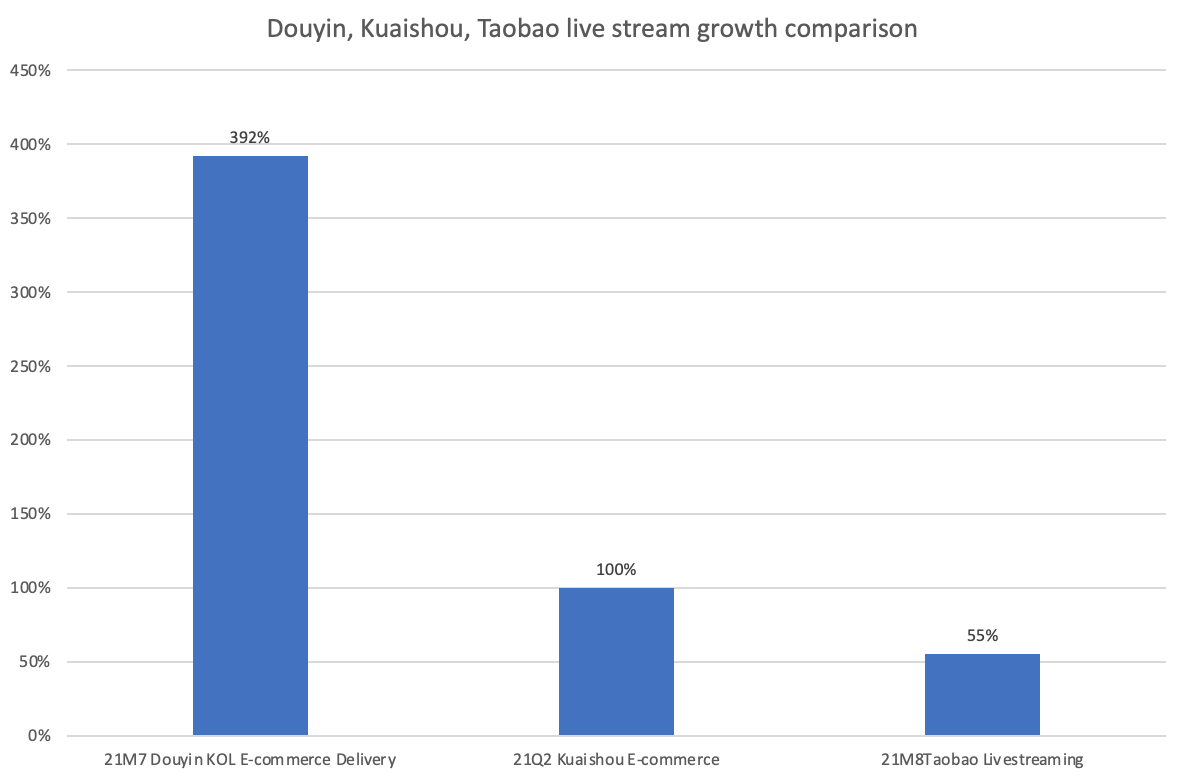
The Internet is always full of challenges and infinite vitality. This is especially true for the live broadcast, which is at the centre of the storm.
Looking back in 2021, livestream commerce was booming unexpectedly. If 2021 is a year for livestream commerce to break the old rules in shopping, 2022 may be a year for the industry to grow and mature.
1.Ups and downs in 2021
Live broadcasting industry in 2021 has ups and downs.
In the Q1-Q2, Douyin of the whole industry was almost snatched away by trembling sound, even the industry insiders regarded it as the only platform that could compete with Alibaba.
At the beginning of 2021, the Douyin’s GMV projected to reach 1 trillion yuan, double the number of the previous year. Douyin has become the biggest unexpected winner in the live broadcasting industry.
Douyin emerged with the concept of "interest ecommerce". There are many net-celebrities and well-known persons joining in the game. The brands also were launching theri flagship stores on Douyin.
It is reported that as early as April 2021, over 1,000 brands started their Douyin store via Douyin’s product called “Douyin Account for Brand”, and more than 220 brands enabled their "flagship store" function. Official data shows that after the launch of the brand flagship store, click-through rate increased by 250% month on month, and the conversion rate of the home page traffic funnel increased by 30% month on month.

2.What are the trends in 2022?
More competition and more changes will happen to the industry. The live broadcast sector will face a new round of reshuffle. Kuaishou, Douyin, Taobao, Bilibili and many other platforms are continuing to face opportunities and challenges.
Analysts believe that the "fall" of top hosts such as Cherie and Weiya is a normal life cycle. They have little impact on Taobao live broadcasts or Alibaba itself. Since the structure adjustment of Taobao live broadcast in 2020, the platform has been supporting businesses to broadcast by themselves rather than relying on famous live broadcast hosts. At present, the brand’s own live broadcast is getting better and better.
According to Alibaba's financial report, in the fiscal year 2021, the commodity trading volume (GMV) of Alibaba ecosystem, including China's retail market (US $1.144 trillion), cross-border and global retail markets and local life services, was 8.119 trillion yuan (US $1.239 trillion).
On anther hand, most people in the industry believe that there may be three variables in the future of live-stream commerce:
1)Driven by technology, the AI virtual host may have a new development.
2)The WeChat Video Channel may usher in an outbreak.
3)The live-stream commerce market will reach 10 trillion Yuan in the future, of which Taobao, ByteDance and Kuaishou will account for over 2/3 of the entire market share. The remaining 1/3 will be divided by Jingdong, Pinduoduo, and other video platforms.
3.Business cooperation between local retail and livestream commerce.
Live broadcasting can be connected with local offline stores to launch live broadcasting and accelerate the communication between the people and their local stores.
4.The regulation didn’t rule out the enthusiasm of the anchor and the platform.
The continued adjustment of the regulation promotes the progress and maturity of the live stream commerce industry, and also improved the quality and the profession to a certain extent.



